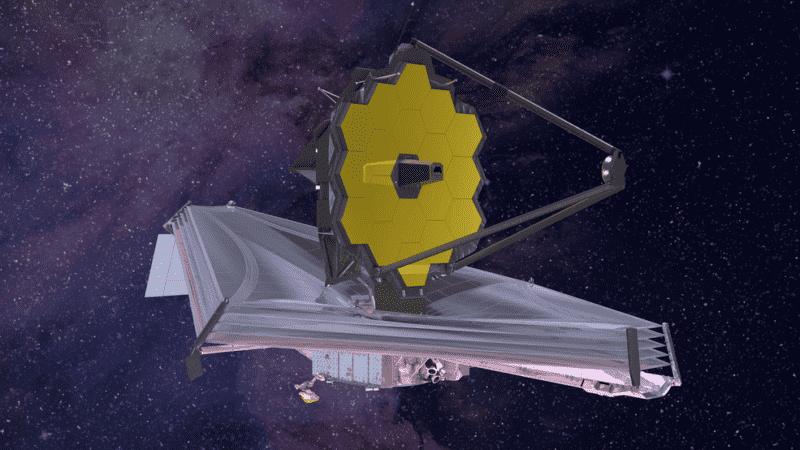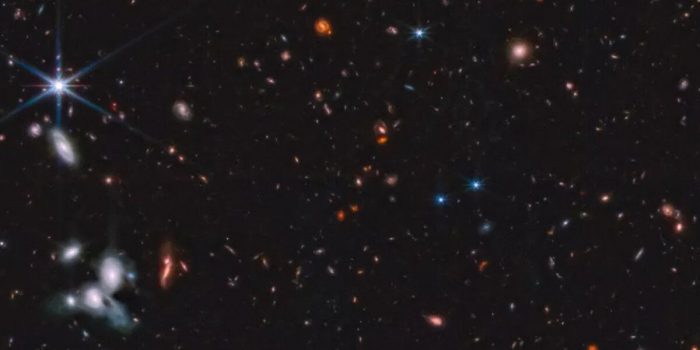A team of scientists from the Space Telescope Science Institute have created a breathtaking three-dimensional visualization of a survey conducted by the James Webb Space Telescope (JWST) of ancient galaxies that have existed way before our existence.
The team has used data that they obtained from CEERS (Cosmic Evolution Early Release Science) survey to create an amazing short video of this experience. In the clip, you soar across the thousands of galaxies which are located near the Big Dipper constellation all while turning back the clock at the speed of about 200 million light-years per second.
When the video is about to end, you arrive at the Maisie’s Galaxy which is 13.4 million light-years away from the Earth which means that you are looking at the galaxy whose light originated only a few 390 million years after the Big Bang (it’s been 13.8 billion years since the Big Bang).
Last year, when the JWST started its scientific investigations, it started on these ancient galaxies and has already accumulated data on some of the most ancient galaxies ever observed. This also has helped us understand the cosmos better than ever.
“This observatory just opens up this entire period of time for us to study,” said Rebecca Larson, a researcher at the Rochester Institute of Technology and one of the survey’s investigators, in a statement. “We couldn’t study galaxies like Maisie’s before because we couldn’t see them.”
“Now, not only are we able to find them in our images, we’re able to find out what they’re made of and if they differ from the galaxies that we see close by,” she added.
This latest discovery comes less than a week after CERES scientists revealed their uncovering of a supermassive black hole located inside one of the earliest known galaxies in the universe, known to exist roughly 570 million years after the Big Bang.

But this is just the start as the JWST has only just warmed up, as more observations of these ancient galaxies help astronomers to understand and study the earliest stages of our universe’s evolution.
“We’re used to thinking of galaxies as smoothly growing,” said Steven Finkelstein, principal investigator of CERES and researcher at the University of Texas at Austin, in the statement. “But maybe these stars are forming like firecrackers. Are these galaxies forming more stars than expected? Are the stars they’re making more massive than we expect?”


